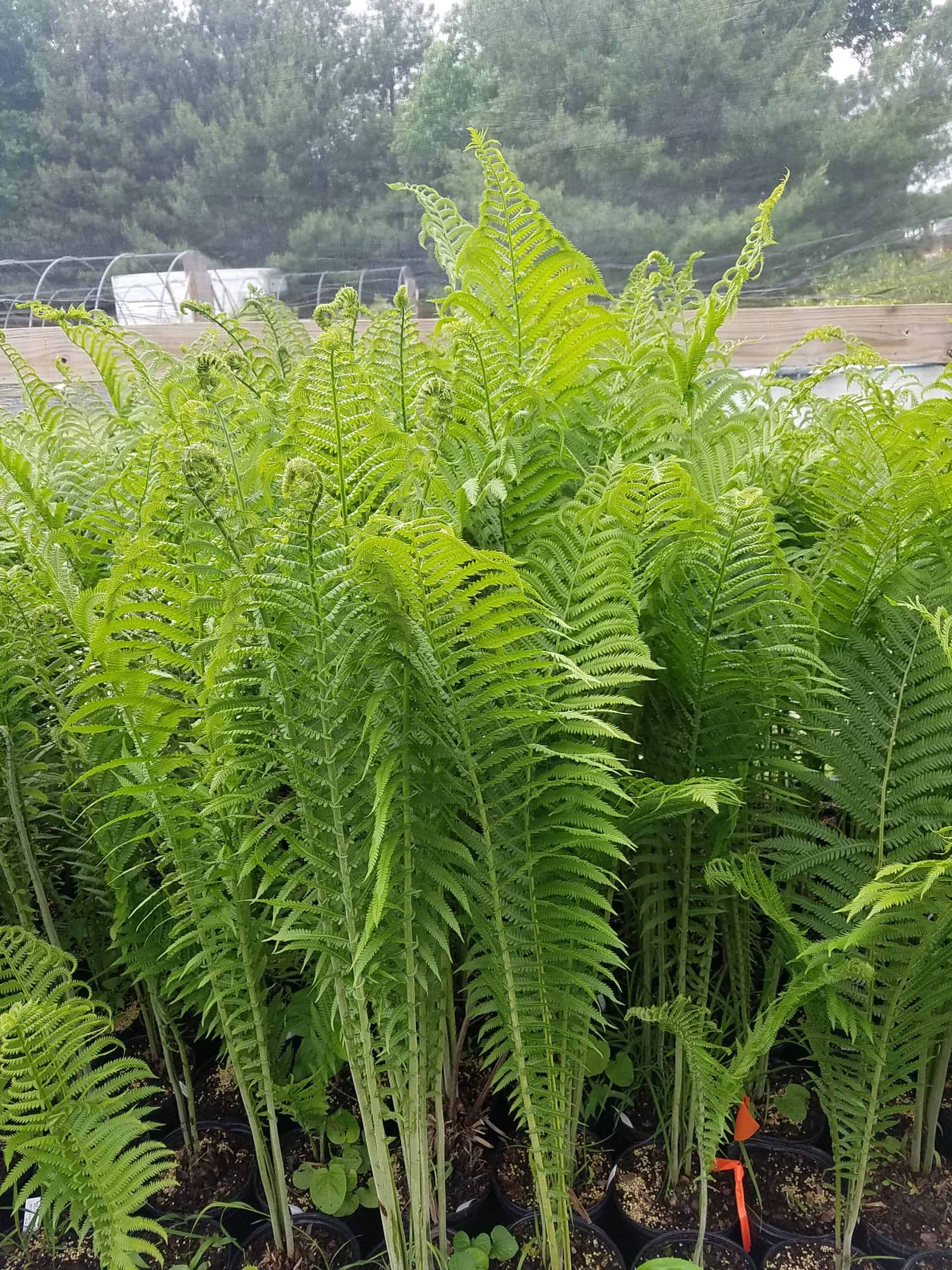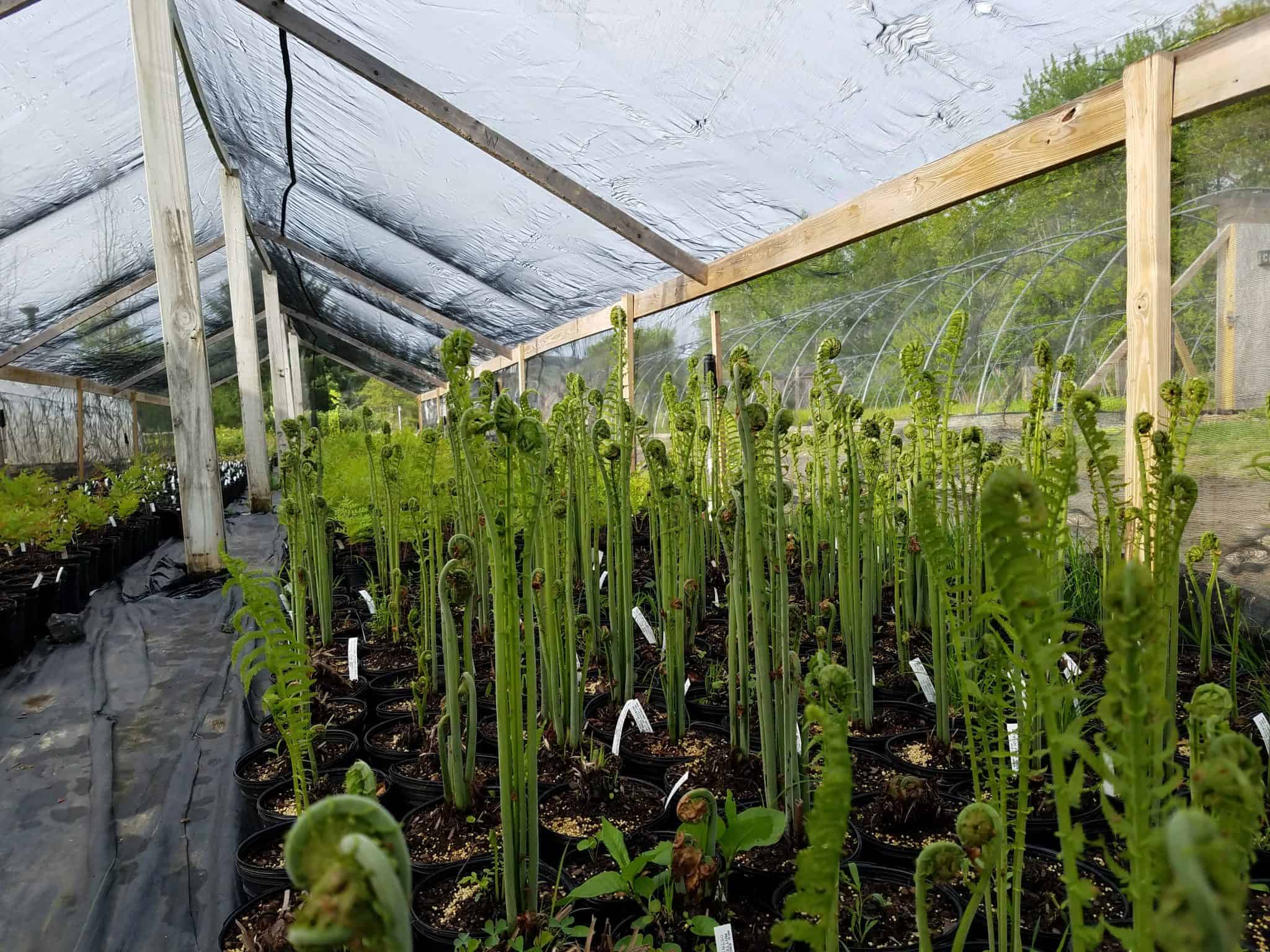Matteuccia struthiopteris
Ostrich Fern




General
A robust perennial fern native to temperate regions of the Northern Hemisphere. It is characterized by its distinctive vase-like form and upright fronds that can reach heights of up to five feet. Ostrich ferns thrive in moist, rich soils and are often found in shaded woodlands, along stream banks, and in wet meadows, adding a lush and dramatic presence to natural landscapes.
Plant Description
Features tall, erect fronds that emerge from a central crown in a striking vase-like shape. Its bright green, finely divided leaflets give the fern a feathery and delicate appearance, contrasting beautifully against shaded woodland settings.
Height (ft)
5'
Soil moisture
Moist to wet
Soil types
Loamy, sandy soils with good drainage
Wetland indicator
FAC
Shade tolerance
Partial to Full Shade
Bloom color
Brown spores underneath fronds
Bloom period
Late summer to early fall when spores are released
Drought tolerance
Low
Salinity tolerance
Low
Range
Found from Maine westward to Minnesota and southward to states like Tennessee and North Carolina.

Kartesz, J.T. 2024. Floristic Synthesis of North America, Version 1.0. Biota of North America Program (BONAP) [website http://bonap.org/]
Additional Information
According to BRIT - Native American Ethnobotany Database, the Cree used a decoction of the leaf stalk base to aid women in expelling afterbirth and for back pain. According to the University of Washington, Elisabeth C. Miller Library, this species' fiddleheads are edible in fiddlehead form.
